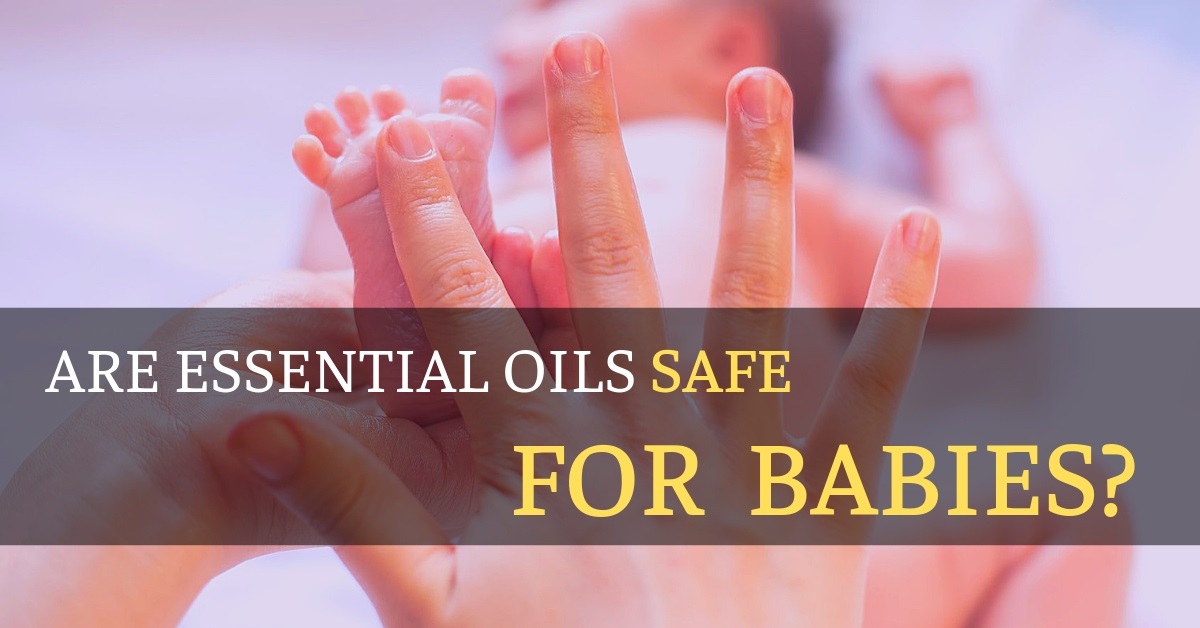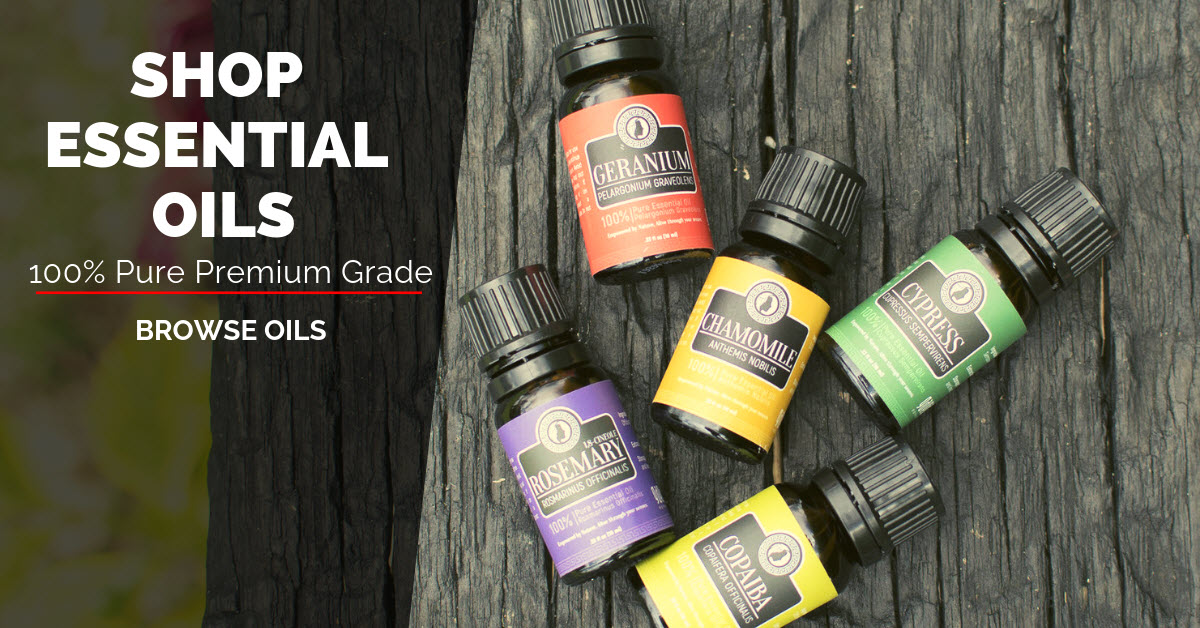In the previous article, we looked at essential oil safety for babies, and how it affects the bonding process between baby and mom. Let’s now discuss how we can use essential oils when it comes to our precious infants.
Using Essential Oils to Help Baby Sleep
We know enough to recognize that baby can smell, but that strong fragrances may be problematic.
Clearly switching on a diffuser and walking away is a bad plan.
This is the equivalent of stealing baby’s sight because immediately he has no reference to you and, of course, he panics.
Likewise, we don’t want to put these very acidic chemicals into a bath.
A wonderful way is to just put a solitary drop of essential oil onto your breast pad and insert it into your bra.
Here an alchemy of fragrances takes place.
The essential oil gently fragrances your breast for him to nuzzle into, and recognize as he needs, but also the scent of both your skin and milk will mingle together on the pad.
At bedtime, place the used pad into the crib, so baby not only has a very faint aroma of the flowers but also senses you close and remembers the comfort of eating, snuggled into the warmth of your breast.
Here are the suggestions for the best essential oils for use with babies:
Geranium (Pelargonium graveolens)
From mum’s point of view this is balancing, stabilizing and nurturing. It seems to lift the weight of the world and make you feel like you can overcome anything. It dispels frustration, making you feel more comforted and confident.
Baby will enjoy the more confident and gentler you, as geranium knocks off those sharp edges. There is a quiet resilience to geranium that will make him feel rocked, and more robust about life.
It’s a very beautiful oil
Lavender (Lavandula angustifolia)
The quintessential motherly love oil. Relaxing, calming and carefree.
Chamomile Roman (Anthemis nobilis)
Feeling under pressure to do things exactly like the book…but feeling desolate because somehow reality doesn’t look quite the same?
Sip a cup of chamomile tea and drip a drop of oil on that pad for you both to inhale.
Suddenly, a smiley face seems to emerge from the daisy like flower singing
“Que sera sera…whatever will be, will be…”
It’s a blissful release from controlling and oppressive thoughts. Like a breath of fresh air, you’ll feel more carefree and relaxed…and baby will love you for it.
Myrtle (Myrtus communis)
Lesser known, myrtle is the professional aromatherapist’ hug…especially for children.
Physically it is wonderful for stuffy nights with coughs and colds but emotionally it is like been rescued to the safest place in the world. Cosseted in a soft, cozy blanket you feel like the world is hundreds of miles away.
It’s a wonderful healer and so gentle you can use it on anyone.
Frankincense (Boswellia carterii)
I often wonder about the magi’s choices of gifts for the Christ- Child. What did they have in mind as they parceled them up, before setting off across the lands?
Their frankincense would have been resin, rather than the essential oil, but its effects are the same.
Tranquility.
Comfort.
Serenity.
Peace.
It opens up the airways and slows down the breath, and it is perfect for a child who just sobs and sobs and sobs.
As he nestles against the pad in your bra, gradually the vapors slow his breathing, centers and comfort him.
Like myrtle, frankincense is a lovely oil to use when they have stuffy noses and colds.
Monarda (Monarda fistulosa)
Beautiful Monarda grows like a weed along the banks of waterways in the States, and forms one of the most important elixirs in their Native American medicines.
The Lakota people would bathe their newborns with Monarda flowers to make the child more steadfast and resilient.
Also known as Bee Bergamot, it smells almost identical to bergamot but is far gentler.
Fortifying to both mind and body, it seems gather help to you when you need it.
I would recommend making notes on which oils baby seems to likes and which ones he doesn’t although each oil has its own properties and benefits you are also helping to create new fragrance associations, like and dislikes.
Essential Oil Dilutions for Infants
If you really must use an essential oil for a baby, your maximum dilution is 0.5% for most oils, and 0.25% for Eucalyptus and peppermint.
Blending Essential Oils for Babies
All essential oils must be diluted into a carrier. The best carrier oils I find for babies are Calendula (Calendula officinalis) and Evening Primrose (Oennis biennis) because they are so healing to the skin, but the best carrier is actually the one you have to hand, so for the purposes of this article we have used the delicious fortifying effects of the sunflower (Helianthus annus) in our recipes.
So: a basic recipe might look like this
- 1 teaspoon carrier = 5ml carrier oil = 5 x 20 drops =100 drops of carrier.
- Therefore 1 drop in this teaspoon would be 1% dilution… hence too strong.
Always use a TABLESPOON full of carrier when treating infants
- 1 tablespoon carrier = 17ml = 17 x 20 drops = 340 drops of carrier
- 1% = 3.4 drops
- 0.5% = 2 drops (1.7 drops to be accurate)
- 0.25% = 1 drop of essential oil to carrier oil.
Oils That Are the Exception That Prove the Rule
The 3%-for-adults-rule is a generic one which does have many exceptions. Jasmine for example has a maximum dilution of 0.7%, so it is imperative you always check each oil individually.
Here, I want to talk about two oils, in common usage, that cause issues and confusion everywhere they go! They are eucalyptus and peppermint. These should be used with care around children.
Note, I use the word “Care”… not “Do not use”, because eucalyptus in particular is such an important oil for respiratory issues.
Eucalyptus (Eucalyptus globulus)
This is one of the most important oils you will ever come across for breathing difficulties and congestion on the chest. Its magic comes from a constituent 1-8 cineole which is a powerful anti-inflammatory to the airways of the respiratory system. [1]
One of the ways it protects the system is to slow down respiration and so with a little one, this is too powerful an action.
Likewise, one of the main areas of research for 1-8 cineole is into is transdermal applications. It is being shown to improve how quickly and how efficiently chemicals (drugs, usually) can be absorbed through the skin.
Since 1-8 cineole seems to improve the rate this making it faster with more chemicals passing through, just as we don’t want to take risks with tiny lungs, neither do we want to bombard their livers with chemistry they may not yet be ready to process.
So…
Ideally, we avoid eucalyptus if we can.
Perhaps supplement with Frankincense , Monarda or Niaouli, all of which will alleviate stuffiness and general coughs and colds.
Use tea tree and myrtle to support the immune system and to comfort.
But…
As well as care, we need to use common sense.
Bronchitis is the fourth biggest childhood killer in the UK. And where dust and pathogens seem to be the largest cause of chronic bronchitis in adults, it is viruses and infections that mostly cause the pediatric disease, and thus can be lethal in children.
Eucalyptus is proven to have antimicrobial effects against many bacteria, including Mycobacterium tuberculosis and methicillin-resistant Staphylococcus aureus (MRSA), viruses, and fungi (including Candida) (7). It is immune-stimulatory, anti-inflammatory, antioxidant, analgesic, and spasmolytic effects. [2]
The dangers of the disease here, far outweigh the risks of slowed respiration. Indeed, one could argue this slowing is incredibly useful to help them catch their breath between coughing. So, in these situations, where all else has failed, and baby is seriously ill then, of course, we want to employ the big guns and reach for the eucalyptus.
Conversely though, one can now see that a drop of eucalyptus oil on a little one’s pillow just to get rid of the stuffiness may be ill advised. Frankincense though…gorgeous!
How to use Eucalyptus Oil On Infants and Babies.
0-6 months
Do not use topically.
Use a very small dilution for inhalation only and do not leave baby alone.
Here, rather than a diffuser I would recommend 1 drop of eucalyptus in a large bowl of hot water, placed in the room away from any siblings’ curious hands.
This gives a much softer, more controllable evaporation of molecules into the room.
6 months to 2 years
Use evaporation method as outlined above
When using topically use in a maximum dilution of 0.25% (see method above) and ONLY APPLY ON THE CHILD’S BACK
Peppermint (Mentha piperita)
The issues with peppermint are very similar because menthol works like 1-8 cineole and slows respiration. Given that menthol activates the trigeminal nerves we saw developing so early in the womb there is an argument that babies may be hyper-susceptible to this action.
Since peppermint is naturally so stimulatory, I would never advise using peppermint on them anyway, since you want them to sleep. It’s just not an oil suited to babies.
Oils to supplement its digestive effects might be mandarin (Citrus reticulata), Chamomile Roman or dill (Anethum graveolens).
There has also been a trend of information suggesting that peppermint is a good oil for reducing fevers, and on paper that would be true because of its naturally cooling action.
However, your body creates a fever as a way of fighting infection. It’s a mighty weapon in the immune systems arsenal against invaders, so the last thing we would ever want to do is reduce it. Many people surmise fevers lead to epileptic fits but actually, rapidly changing the body’s temperature is far more dangerous.
Lastly, a fever should be treated by the doctor. Do not use peppermint to reduce infant temperatures.
Essential Oils Recipes For Babies
Tummy- Love
The early days are such a treasure, until colic sets in! The griping pain is distressing to both baby and parent. This recipe uses the same ingredient that “gripe water” utilizes…dill… to calm the spasms in the gut.
- 1 tablespoon Sunflower oil
- 1 drop dill
- 1 drop chamomile roman
- 1 drop mandarin
Method of Use: Massage into baby’s tummy in a clockwise motion around his navel.
Use the lightest fingertip pressure to stroke in the oils.
Draw a square, doing two strokes up, two across, above the navel, two down and just one across the pelvis. Repeat for around eight times to soothe baby and stroke the oils into the intestine.
Then, lay baby tummy down onto something warm. That might be against your shoulder or perhaps over a warm cushion and continue to gently stroke the oil into his back.
Safety: This oil can be used on younger than 6 months if the condition is very bad, however try the warm cushion in its own first. Sometimes the stretch and the heat can do wonders to release the spasm.
Teething
- 1 tablespoon Sunflower oil
- 1 drop chamomile roman
Method of Use: Stroke a small amount into the OUTSIDE of the jaw. Do not use on the inside of the mouth.
Safety: This oil can be used on younger than 6 months if the condition is very bad however a drop of chamomile on your blouse close to where he likes to snuggle may have a similarly soothing effect.
Colds and Stuffiness
- 1 tablespoon Sunflower oil
- 1 drop frankincense
Method of Use: Stroke a small amount into the chest and on the cheekbones over the sinus tracts.
Important read: Are Essential Oils Safe For Babies?
The Bottom Line
- We discussed which essential oils are safe for use with babies, as well as specific methods of doing so.
- Detailed dilutions are included for ages 0-6 months, as well as 6 months to 2 years.
- You will also find 3 handy recipes for blends in easing the normal difficulties in everyday Mom-with-Baby life.
Read more:
Works cited
[1] UR, Juergens. Anti-inflammatory properties of the monoterpene 1.8-cineole: current evidence for co-medication in inflammatory airway diseases. s.l. : Drug Research, 2014.
[2] Sadlon AE1, Lamson DW. Immune-modifying and antimicrobial effects of Eucalyptus oil and simple inhalation devices. s.l. : Alternative Medicine Review: A Journal of Clinical Therapeutic., 2012.




One Reply to “Essential Oils For Babies – The How To Use Mom’s Guide”